What is a Lease Agreement?
A Lease Agreement is your roadmap for a successful landlord-tenant relationship. It’s the document that lays out rent, lease duration, responsibilities, and property rules. But drafting one can be daunting, and hiring a realtor or attorney can be expensive. The solution? A Free Standard Rental Agreement and our expert guidance. We’ll walk you through the process, empowering you to Create a Solid Residential Lease without the added cost.
When to Use a Residential Lease Agreement?
A Residential Lease Agreement is crucial in various rental situations. Here’s when you’ll need it:
- New Tenant Arrivals: To set terms for new tenants.
- Lease Renewals: For extending existing agreements.
- Property Management Companies: They use it in the rental process.
- Roommate Situations: For clarity in shared living.
- Rent Increases: To update rental fees.
- Property Inspections: Documenting property conditions.
- Property Sales: Transferring terms to new owners.
- Lease Termination: Defining exit procedures.
In these scenarios, a Residential Lease Agreement plays a pivotal role in maintaining transparency and fairness throughout the rental journey.
Download the Free Residential Lease Agreement Template
Ready for the fun part? Download your free lease agreement now!
Prefer a helping hand to walk you through the process? Click Here To Create a Lease Using a Form Builder
First, choose your preferred file format. If you’re tech-savvy and comfortable with PDFs, go for the PDF version using Adobe Reader. If you prefer Microsoft WORD, simply download it using the WORD option below. Don’t worry if you’re not up to speed with modern software; you can try the ODT or RTF formats. Your computer can likely open one of these. Just click on the relevant file format icon below to download the lease. You might need to right-click and “Save As” to store it on your computer.
Once you have the lease in your chosen format, I’ll guide you through each step of filling it out.
When to Use a Residential Lease Agreement?
There are plenty of Lease Forms floating around on the internet, but what good are they if you don’t know how to use them? As a lawyer and a landlord, I created from scratch what I think is the absolute best Residential Lease. I call it “The Landlord Guidance™ User-Friendly Residential Lease Agreement”.
Let’s dive in!
I’m going to give you this lease for free as long as you promise to learn about using it. One more thing to get out of the way: In this article, I use the terms “Rental Agreement” and “Lease Agreement” interchangeably. I’m referring to the same document, so don’t get confused.
How to Sign the Lease with Your Tenant
Your Lease Agreement serves as a critical communication tool between you and your tenant. It’s your way of saying, “This is how we operate,” right from the start, making sure everyone is on the same page and promoting a positive and cooperative rental experience. Hence, here are the main points that need to be included in the lease agreement for your smooth and clearly marked path:
1.Property Information:
Full Property Address: This is where you enter the property address you’re renting to the tenant, which is often the same as the mailing address. Don’t forget to include the unit or apartment number if applicable.
Property Legal Description: Many properties have a legal description that includes details like the county, city, subdivision, block, and lot number. You can find this information in property records, deeds, or your local appraisal district’s website. Include this description accurately.
2. Parties to the Lease:
Landlord Name: If you own the property in your name, put your name here. If it’s owned by a Trust, Corporation, or LLC, use the respective entity’s name as the landlord.
Tenant Names: List the first and last names of all adult tenants (18 years and older) moving in. Including all adults helps avoid complications later.
3. Lease Term:
Commencement Date: This is when the lease officially starts, typically when the tenant gets the keys. Choose the date carefully to allow time for utilities to be switched to the tenant’s name.
Expiration Date: For simplicity, it’s best to end the lease on the last day of the month. Calculate it based on the lease term, ensuring clarity for both parties.
4. Auto-Renewal and Notice of Termination:
This section defines what happens after the lease ends. Specify how many days of notice are required from either party if they want to terminate or renew the lease.
5. Rent Amount, Due Date, and Payment Methods:
Rent Amount: This is the amount of monthly rent you want to charge your Tenant. So how should you figure that out? I like to go to Zillow and see what other similar homes in the area are going for. So once you decide, put the amount in here (of course your prospective tenant needs to agree to it).
Prorated Rent: If the lease begins in the middle of a month, calculate and specify the prorated rent amount.
Due Dates: Typically, rent is due on the 1st of the month, with a grace period if any.
Payment Methods: Choose acceptable payment methods. Consider safety and convenience for both parties. begin your rental journey. Congratulations!

6. Late Fees:
Set the date when late fees will apply (usually after a grace period).
Define the initial late fee and any daily late fees if rent remains unpaid.
Date Late Fee Applies: Match the number in this box with the day in the Rent Section above. Typically, it’s the end of the 3rd day of the month.
Initial Late Fee: This fee is triggered if rent isn’t received by the specified day (end of the 3rd day). I usually set it at $25, but choose an amount compliant with state and local rules.
Per Day Late Fee: After the initial fee, daily fees accrue to discourage late payments. I personally charge an extra $10 per day. For instance, if the Tenant pays 3 days after the 3rd, the total fee is $45 ($25 + $10 + $10). Some tenants find this an additional cost, ensuring timely payments and providing extra income for the Landlord.
7. Returned Payments:
In the case of bounced checks, set a returned payment fee that covers your expenses and the inconvenience.
8. Security Deposit:
At the end of the lease when the Tenant moves out, the Landlord may deduct money from the Deposit for damage, and then must return the remainder. Ensure it complies with your state regulations. Determine the circumstances under which the deposit may be deducted for damages and return procedures. Any deduction must usually be in writing, and given to the Tenant (along with the remainder amount) within 30 days. Check your local rules on this one too.
Amount of Security Deposit to Charge: Some states regulate the amount you can charge. Look up your state in the chart below. If you have reason to believe the tenant might do damage (perhaps after you called their references on their Rental Application), then charge more if your jurisdiction allows. So in this box, input the amount you will charge.
9. Pets:
Decide whether pets are allowed, and if so, specify the terms, the number of pets allowed, and any non-refundable pet deposit.
People like their pets, and accepting pets will open up your property to more prospective tenants. But pets, especially large dogs, or a large quantity of cats, can destroy your property.
For these cases, consider having Non-Refundable Pet Deposit. Why “non-refundable”? Because we all know that almost any pet will cause some damage. If the pet is a large dog, you might want to charge $350. If it is a little hamster, maybe $30 will do. So put in the amount you will charge in this box.
10. Who Pays the Utilities?
Typically, it is not advisable for the Landlord to cover utilities, as it can lead to increased usage by tenants. Common practice is for tenants to pay all utilities. However, if there are specific utilities that the Landlord agrees to cover, please replace the word “none” in this box with the names of the utilities you will be responsible for.
11. Occupants and Guests:
Set limits on the number of people living in the property and how long guests are permitted.
12. Parking and Vehicles:
Determine the number of vehicles tenants can have and any rules regarding them.
13. Smoking:
Indicate whether smoking is allowed inside the property or only in designated areas.
14. Landlord Trip Charges:
If a scheduled property inspection is missed, resulting in an unnecessary trip for the Landlord, a “Trip Charge” will be applied. This fee, set at $30 in my case, covers time and expenses and serves as an incentive for the Tenant to honor commitments. Adjust the amount to reflect your circumstances appropriately.
15. Keys and Opening Devices:
Specify the number of key sets tenants will receive and charges for lost keys.
16. Lockout Charge:
Establish a lockout fee, if applicable, for assisting tenants locked out of the property.
17. Lead-Based Paint Disclosure:
Determine the construction year of your property and check the corresponding box: Before 1978 or After 1978.
If Before 1978:
- Knowledge of Lead-Based Paint: Check if you have knowledge of lead-based paint on the property.
- Records Disclosure: If applicable, confirm your ability to provide the Tenant with hazard records.
- No Knowledge: If you have no knowledge of lead-based paint, check this box.
- EPA Pamphlet: If applicable, confirm providing the Tenant with the EPA pamphlet “Protect Your Family From Lead in Your Home” by downloading and sharing it.
Ensure these boxes are checked based on your property’s status and disclosure information. Click Here to Download “Protect Your Family From Lead in Your Home”
18. Asbestos Disclosure:
Indicate whether you’re aware of asbestos in the property. As asbestos was used as a building material throughout the 20th century, but we now know that asbestos dust causes cancer and other diseases. Therefore, it’s important to disclose if your property has asbestos. In this section, simply check if you are “not aware” or are “aware” of asbestos on the property.
19. Special Provisions:
Customize your lease with specific rules or agreements that apply to your property.
20. Notices:
Provide addresses for sending notices to both the landlord and tenant.
21. Signatures:
Print the names of the landlord(s) and tenant(s) under the respective signature lines.
Now, with a well-completed Residential Lease Agreement, you’re ready to sign and
How to Actually Sign a Lease with Your Tenant: Best Practices
First, let me get this tip out of the way: Do not sign the lease first and then send the signed lease to your tenant. Why? Because now they can hold onto the lease (that has your signature on it) and take their sweet time signing it. If they don’t get back to you for a while, you cannot rent the property to someone else for fear that this first tenant will finally decide to sign the lease, show up with it (with your signature on it), and then sue you in court for breaking it! So no matter what, even if you sign the lease in person, have the tenant sign first.
My recommendation is to sign the lease in person with the new tenant. Let’s call it a “signing ceremony.” At this ceremony, you get to go through the lease with the tenant, going over the rules and having them initial each page. By doing this, it makes it less likely that the tenant will break those rules. Why? Because they now feel like they know you, and you have verbally gone over the rules with them. Contrast that to a tenant who quickly signs a lease in their email without reading it.
Also, summon up your courage and say something like, “I just want you to know up front that I am very strict about receiving the rent on time.” I know it is hard to say this when everybody is happy and excited. But I promise you that if you don’t, the tenant may think of you as a bill they can put off when things are tight. And you don’t want that. You want them to think, “I will pay my rent first, and then figure out my other bills.” So please let them know up front that you don’t play games.
Okay, so have the tenant initial each page and then sign and date it on the last page. Get their Deposit and First Month’s rent from them (and any pro-rated rent due) in the form of Cash, Certified Check, or Money Order. No personal checks for this part! I’ve been burned bad here, and it wouldn’t have happened if I insisted on certified funds. At this point you can give them the keys (if this is when the lease actually begins).
You will then initial and sign the lease as the Landlord and send them a copy within the next few days.
As the tenants get settled in, expect some questions from them for the first few weeks. Then after that things usually (and hopefully) get smooth.
FAQs on Residential Lease Agreement
They can be, but if you need to enforce a verbal lease, you will need to be able to provide evidence. And that evidence is tough to show without a written lease. If you are thinking of renting your property to a friend or someone else with just a verbal agreement, please STOP! Do yourself (and everyone else) a favor and create a written lease agreement. If anything, it will cause you to stop and think about potential problems now, up front, and not later when it’s too late.
Also please be aware that because of a legal rule called the “Statute of Frauds,” any lease that will not end within one year from its commencement must be in writing, or else it will not be enforceable by the landlord.
This depends on what state you live in. Some states have no rule and let you charge as much as you think necessary. Other States cap the amount you can charge. For example, California says that the maximum security deposit you can charge is an amount equal to 2 month’s rent, or if the home is already furnished, then 3 month’s rent. Check the Table Below to find out your State’s Maximum Security Deposit
Generally, No. Would you like your landlord showing up when you’re in your underwear, relaxing on the couch? However, the landlord does need to go into the rental home for plenty of reasons. Therefore, many states have laws that regulate the amount of time the landlord must give the tenant before showing up. If your state does not have a law, it does not necessarily mean you have free reign to go over there. You should still provide the tenant with reasonable notice, and of course don’t show up at inconvenient times (dinner time, bedtime, nighttime, etc.). Check the Table Below to see if your state regulates the “Landlord Access” notice time.
Many people use these terms interchangeably. However technically, a residential “Lease Agreement” is an agreement to rent property for a specified amount of time (called a term). A residential “Rental Agreement” is a periodic agreement, such as a month-to-month agreement. As a lawyer and a landlord, I recommend that you always try to lease to tenants for a specified term, such as a 6 month lease or a 1 year lease.
If the tenant still has time left on their lease, and they simply abandon the place, then you have a “duty to mitigate.” This means you need to clean up the place and try to get it rented again. However, the tenant who broke the lease is liable (they have to pay you) for the rest of the lease up until a new renter moves in. They also have to pay you for any damages and expenses they caused by breaking the lease, including the expenses you incurred finding a new renter. If you can find where they moved, you’ll need to send them a demand letter for the money they owe, and maybe even sue them if necessary, and if you think it’s worth it.
Look at your lease! Most leases say 30 days before the lease expires. If you don’t have a lease, and are in a month-to-month, then 1 month written notice is most likely going to work. However the more notice you give, the easier it will be for the tenant to find a new place.
Lease Agreements by States
Choose the state where your rental property is located:
Residential Lease Agreement Reference Chart
This table shows the Maximum Security Deposit amount the landlord can charge (amount equal to), when the landlord must give back the Security Deposit by, the amount of advance notice the landlord must give the tenant to enter the property, and a link to the Landlord-Tenant laws for each U.S. State.| State | Security Deposit No More than: | Return Security Deposit within: | Notice Time for Landlord Access | Landlord Tenant Law |
|---|---|---|---|---|
| Alabama | 1 Month's Rent | 60 Days | 2 Days | Alabama Uniform Residential Landlord and Tenant Act |
| Alaska | 2 Month's Rent, No Max is rent is over $2,000 per month | 14 Days, 30 if Tenant moves out late. | 24 Hours | Alaska Uniform Residential Landlord & Tenant Act |
| Arizona | 1.5 Month's Rent | 14 Business Days | 2 Days | Arizona Residential Landlord & Tenant Act |
| Arkansas | 2 Month's Rent | 60 Days | Not Regulated | Arkansas Residential Landlord Tenant Act |
| California | 2 Month's Rent, 3 Month's if furnished | 21 Days | 24 Hours, 48 for move-out inspection | California Residential Landlord and Tenant Guide |
| Colorado | No Limit on Deposit Amount | 1 Month | Not Regulated | Title 38 - Property Real and Personal |
| Connecticut | 2 Month's Rent for Tenants under 62 years old. 1 Month for 62 and older | 30 Days from move-out, 15 from receiving tenant's forwarding address. | "Reasonable" Notice | Title 47a - Landlord & Tenant |
| Delaware | 1 Month's Rent for leases of 1 year or longer. No limit for month-to-month tenancies | 20 Days | 2 Days | Delaware Residential Landlord-Tenant Code |
| Florida | No Limit on Deposit Amount | 15 Days if no Deduction, 30 Days if Landlord makes Deductions | 12 Hours | Florida Title VI, Chapter 83, Landlord and Tenant |
| Georgia | No Limit on Deposit Amount | 1 Month | Not Regulated | Georgia Landlord Tenant Handbook |
| Hawaii | 1 Month's Rent, plus another Month's Rent for Pet Deposit | 14 Days | 2 Days | Hawaii Residential Landlord-Tenant Code |
| Idaho | No Limit on Deposit Amount | 21 Days. Or Lease can specify up to 30 Days | Not Regulated | Idaho Attorney General Landlord and Tenant Manual |
| Illinois | No Limit on Deposit Amount | 30 Days to send deductions. If you don't then must return in full by 45 days. | Not Regulated | Illinois Landlord and Tenant Act |
| Indiana | No Limit on Deposit Amount | 45 Days | "Reasonable" Notice | Indiana Property Code |
| Iowa | 2 Month's Rent | 30 Days | 24 Hours | Iowa Uniform Residential Landlord and Tenant Law |
| Kansas | 1 Month's Rent, 1.5 if furnished | 30 Days | "Reasonable" Notice | Kansas Statute, Chapter 58, Article 25 - Landlords and Tenants |
| Kentucky | No Limit on Deposit Amount | 60 Days | 2 Days | Kentucky Landlord Tenant Law |
| Louisiana | No Limit on Deposit Amount | 1 Month | Not Regulated | Guide to Louisiana Landlord Tenant Laws by LA Attorney General |
| Maine | 2 Month's Rent | 30 Days for a Lease, 21 Days for a month-to-month | 24 Hours | Maine Statutes, Title 14, Chapter 709: Entry and Detainer |
| Maryland | 2 Month's Rent | 45 Days | Not Regulated | Maryland Real Property Statute |
| Massachusetts | 1 Month's Rent | 30 Days | Not Regulated | The Massachusetts Attorney General's Guide to Landlord and Tenant Rights |
| Michigan | 1.5 Month's Rent | 30 Days | Not Regulated | Michigan Legislature's Guide for Tenants and Landlords |
| Minnesota | No Limit on Deposit Amount | 3 Weeks | "Reasonable" Notice | Minnesota Landlords and Tenants: Rights and Responsibilities |
| Mississippi | No Limit on Deposit Amount | 45 Days | Not Regulated | Mississippi Residential Landlord and Tenant Act |
| Missouri | 2 Month's Rent | 30 Days | Not Regulated | Missouri’s Landlord-Tenant Law Handbook by MO Attorney General |
| Montana | No Limit on Deposit Amount | 30 Days. If no deductions, then 10 Days. | 24 Hours | Montana Residential Landlord and Tenant Act |
| Nebraska | 1 Month's Rent, plus another 1.25 Month's Rent for Pet Deposit | 14 Days | 1 Day | Nebraska Uniform Residential Landlord Tenant Act |
| Nevada | 3 Month's Rent | 30 Days | 24 Hours | Nevada Residential Landlord and Tenant Act |
| New Hampshire | 1 Month's Rent or $100, whichever is greater | 30 Days | "Adequate" Notice | NH Landlord Tenant Statutes |
| New Jersey | 1.5 Month's Rent | 30 Days | 1 Day | NJ Landlord Tenant Law Information |
| New Mexico | 1 Month's Rent for leases of less than 1 year, No Limit for leases of 1 year or more | 30 Days | 24 Hours | New Mexico Statutes - Article 8- Owner-Resident Relations |
| New York | No Limit on Deposit Amount | A "Reasonable" time. We suggest 20-40 Days. | Not Regulated | NY Landlord and Tenant Statute |
| North Carolina | 2 Month's Rent, 1.5 for month-to-month tenancies | 30 Days, plus additional 30 Days if needed to finalize deductions. | Not Regulated | NC Attorney General Landlord Tenant Booklet |
| North Dakota | 1 Month's Rent, 2 Month's or $2500 with Pet (whichever greater) | 30 Days | "Reasonable" Notice | ND Landlord Tenant Century Code |
| Ohio | No Limit on Deposit Amount | 30 Days | 24 Hours | Ohio Revised Code - Landlords and Tenants |
| Oklahoma | No Limit on Deposit Amount | 30 Days | 1 Day | OK Landlord and Tenant Acts |
| Oregon | No Limit on Deposit Amount | 31 Days | 24 Hours | OR Laws Ch. 90 - Residential Landlord and Tenant |
| Pennsylvania | 2 Month's Rent, then 1 Month during 2nd and subsequent years of renting | 30 Days | Not Regulated | PA Landlord and Tenant Act of 1951 |
| Rhode Island | 1 Month's Rent | 20 Days | 2 Days | RI Residential Landlord and Tenant Act |
| South Carolina | No Limit on Deposit Amount | 30 Days | 24 Hours | SC Residential Landlord and Tenant Act |
| South Dakota | 1 Month's Rent | 14 Days. If deductions, then 45 Days. | Not Regulated | Codified Laws, Ch. 43-32 - Lease of Real Property |
| Tennessee | No Limit on Deposit Amount | 30 Days | 24 Hours | Uniform Residential Landlord and Tenant Act |
| Texas | No Limit on Deposit Amount | 30 Days | Not Regulated | Texas Property Code - Title 8, Chapter 92 - Residential Tenancies |
| Utah | No Limit on Deposit Amount | 30 Days | 24 Hours | Utah Code - Title 57, Real Estate |
| Vermont | No Limit on Deposit Amount | 14 Days. 60 days if a "seasonal" property. | 48 Hours | Renting in Vermont - Information Handbook for Tenants & Landlords |
| Virginia | 2 Month's Rent | 45 Days | 24 Hours | Virginia Residential Landlord and Tenant Act |
| Washington | No Limit on Deposit Amount | 21 Days | 2 Days, 1 Day for showings | Residential Landlord-Tenant Act |
| West Virginia | No Limit on Deposit Amount | 60 Days, but if property is re-rented within 45 days, then immediately. | Not Regulated | West Virginia Code, Ch. 37, Article 6 |
| Wisconsin | No Limit on Deposit Amount | 21 Days | "Advance" Notice | Wisconsin State Law Library - Landlord Tenant Laws |
| Wyoming | No Limit on Deposit Amount | 30 Days, or 14 days from receiving tenant's forwarding address, whichever happens first. | Not Regulated | Wyoming Statutes, Title 1, Ch. 21, Article 12 - Residential Rental Property |

Rich is an Entrepreneur, Real Estate Investor, and Lawyer licensed in Texas. He enjoys family, community, and work. He started Landlord Guidance in 2012 to help fellow landlords, and teach them that being fair and ethical with their tenants is the true path to long-term success.
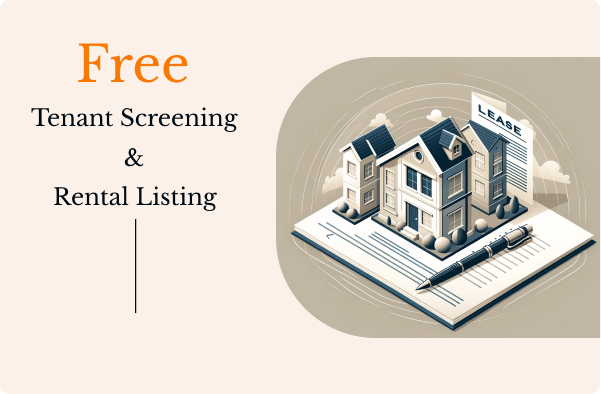

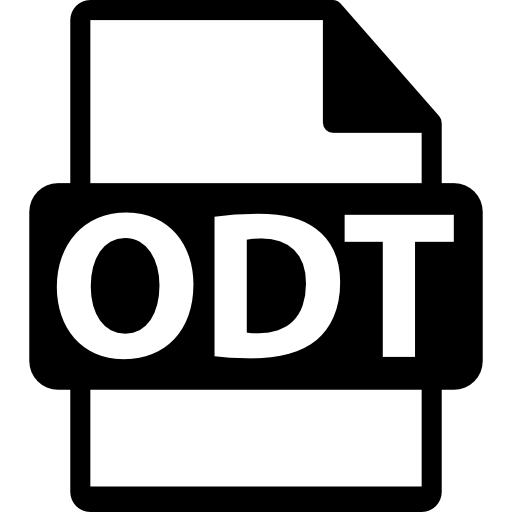
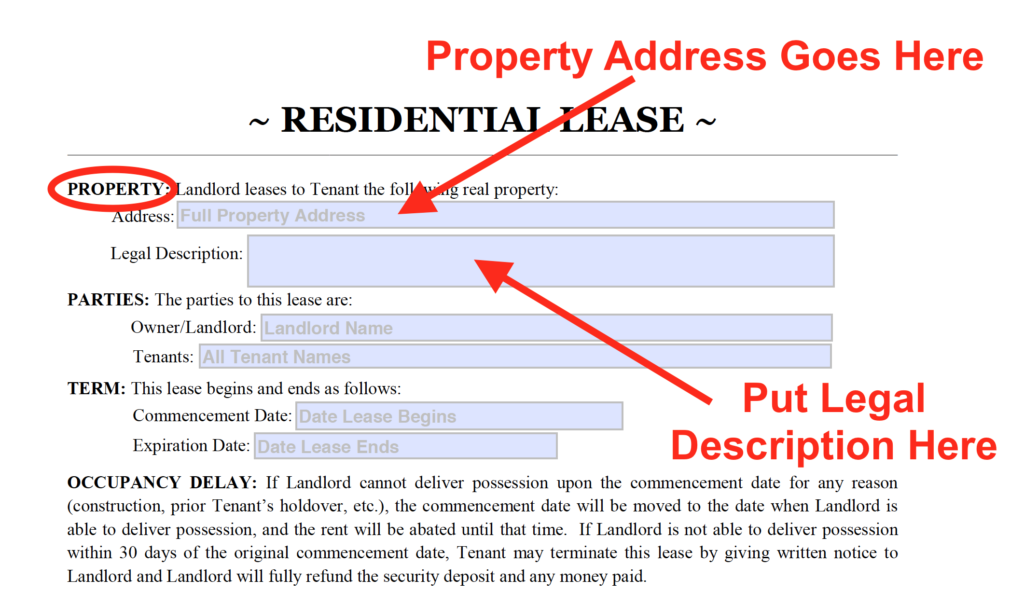
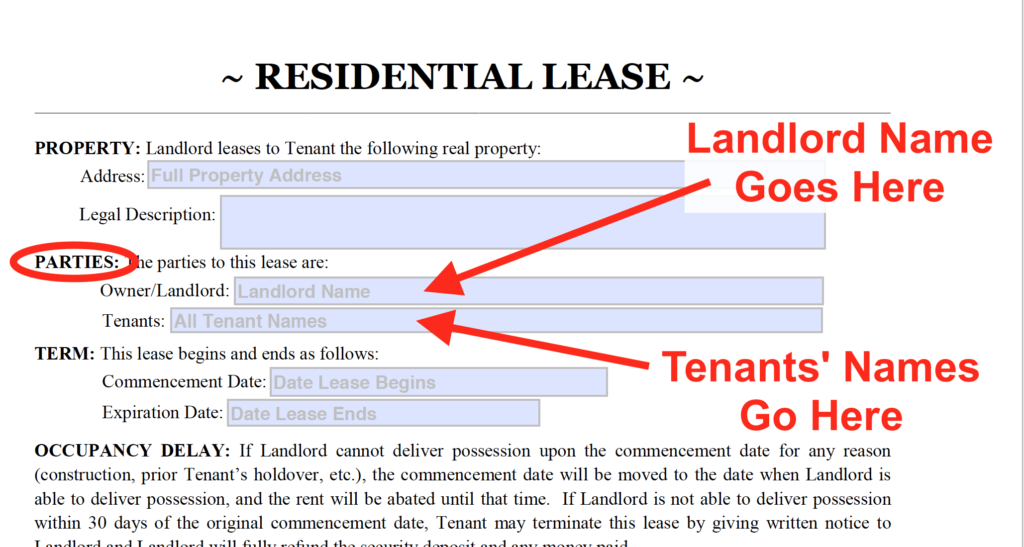
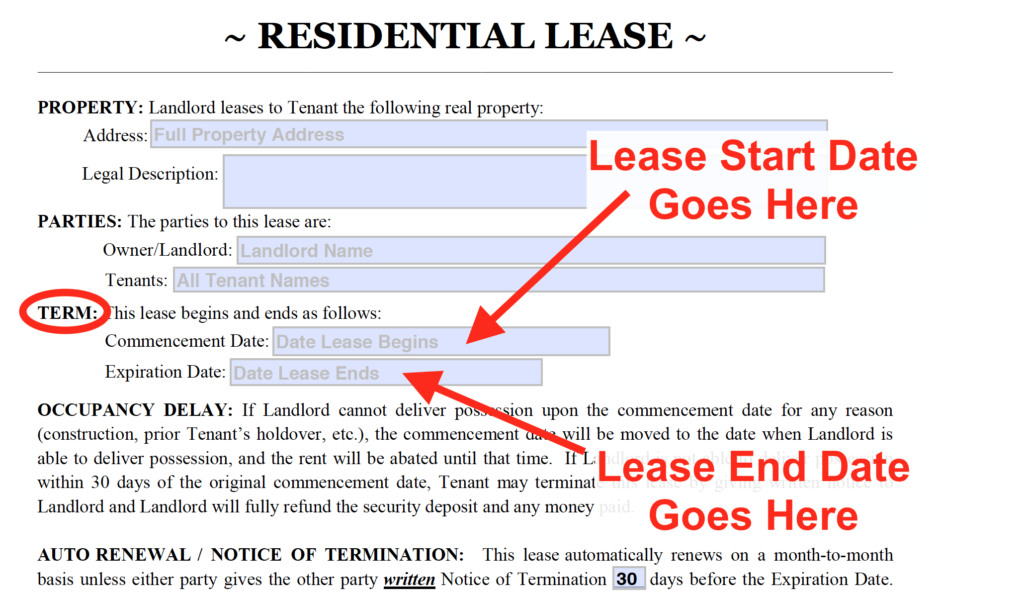
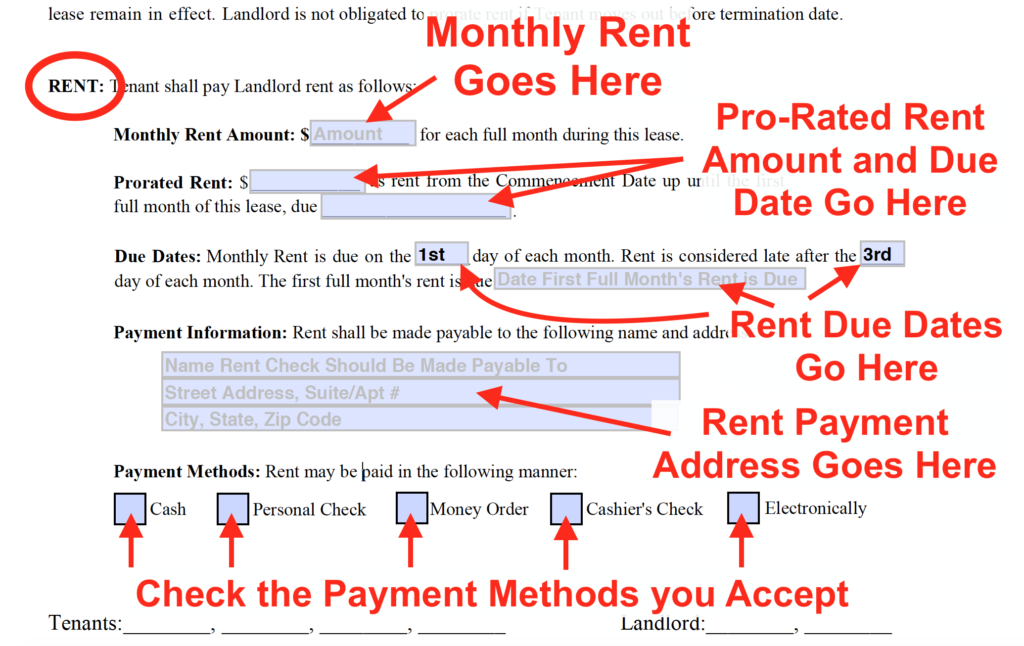
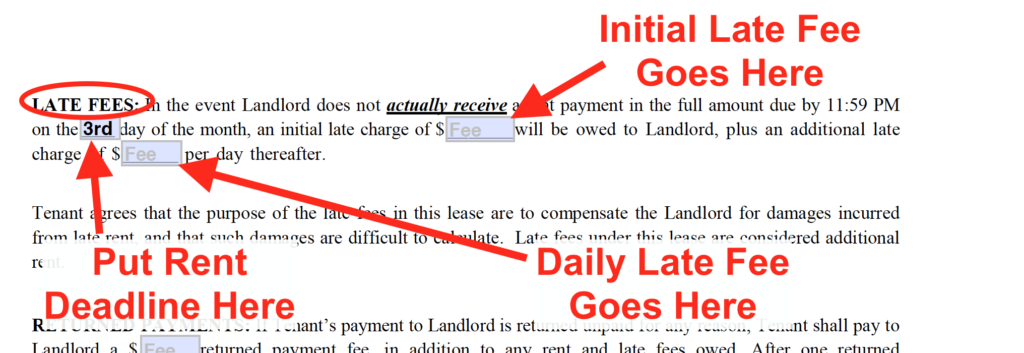
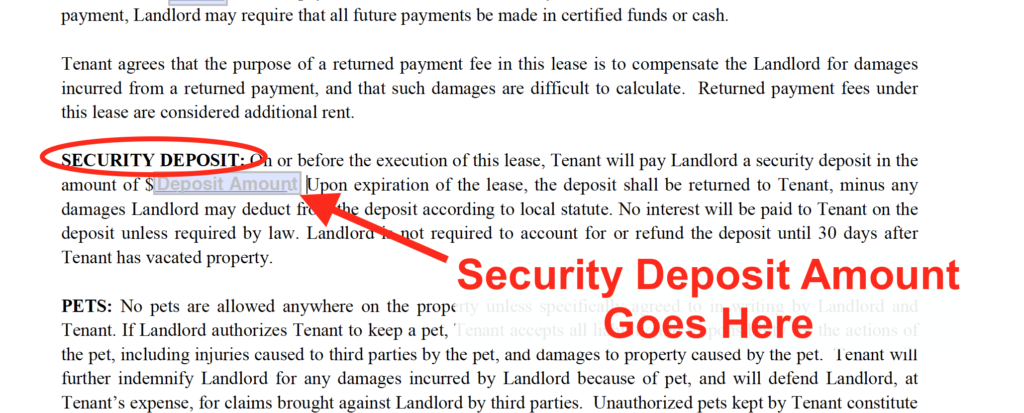
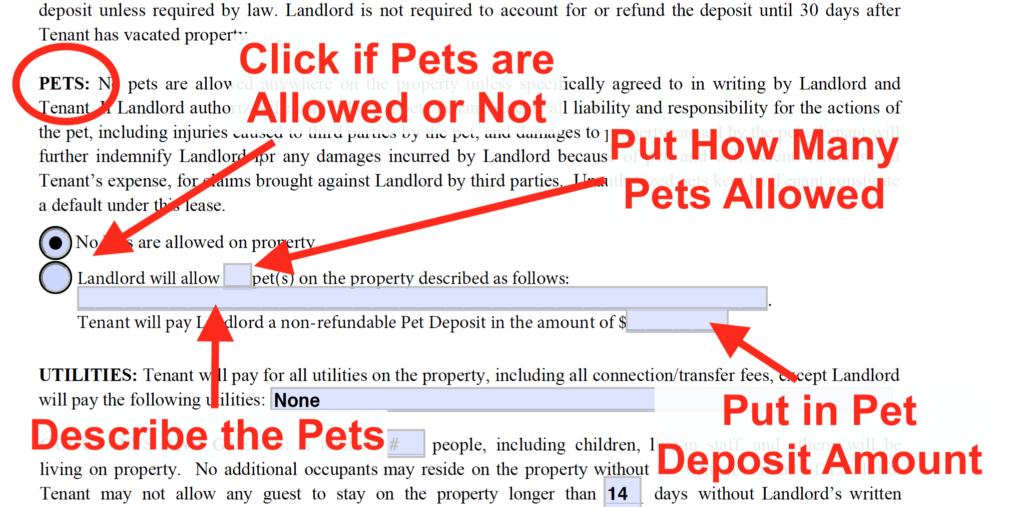
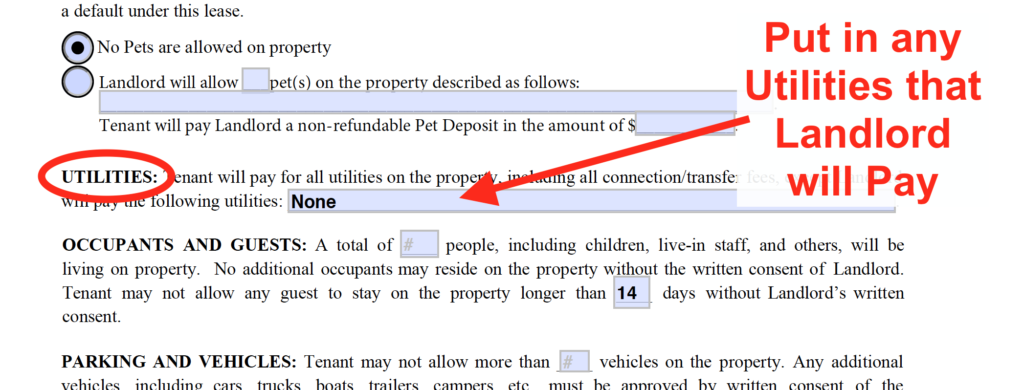
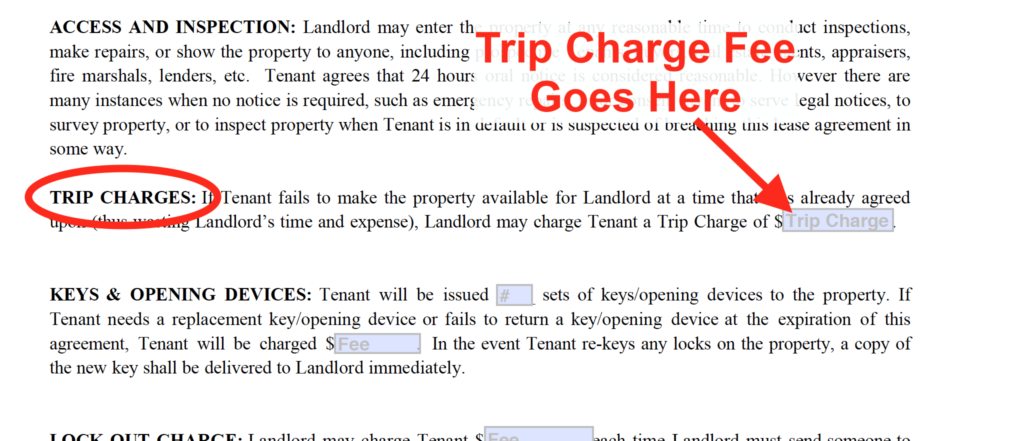
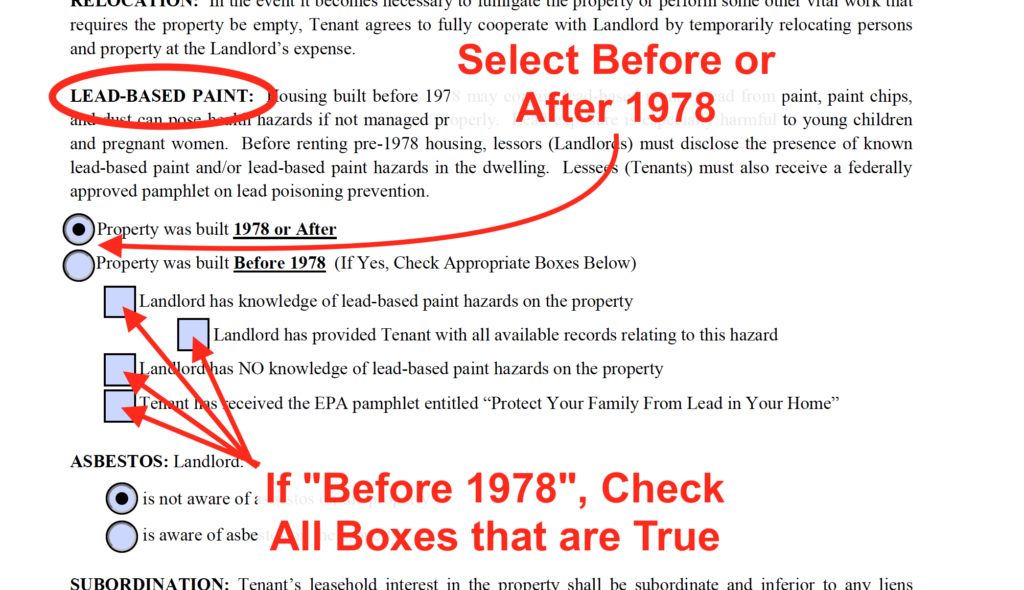
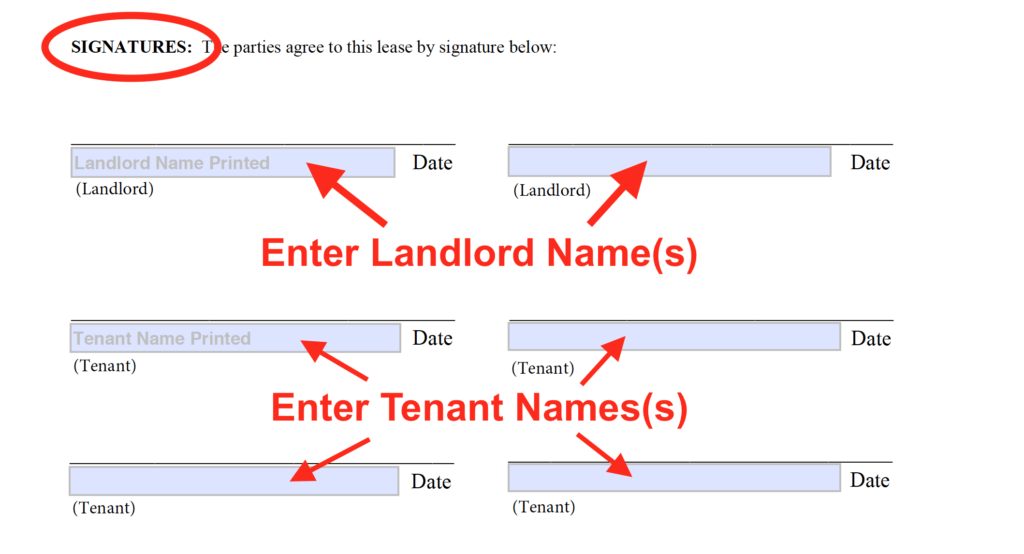

You must be logged in to post a comment.